Carving Item Number: Na1361 from the MOA: University of British Columbia
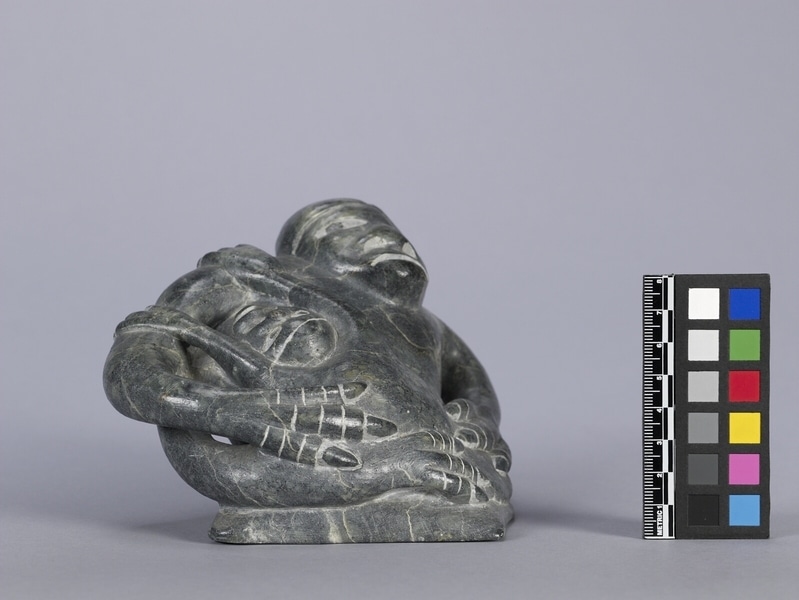
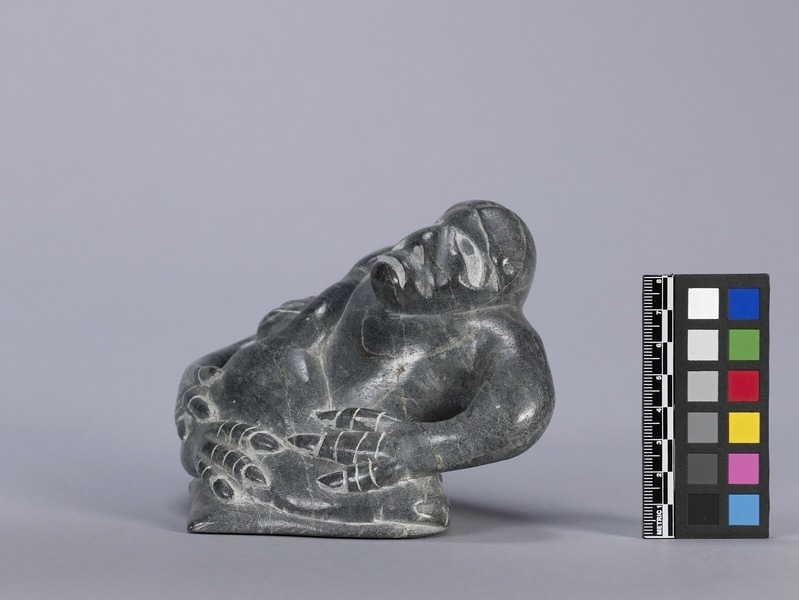
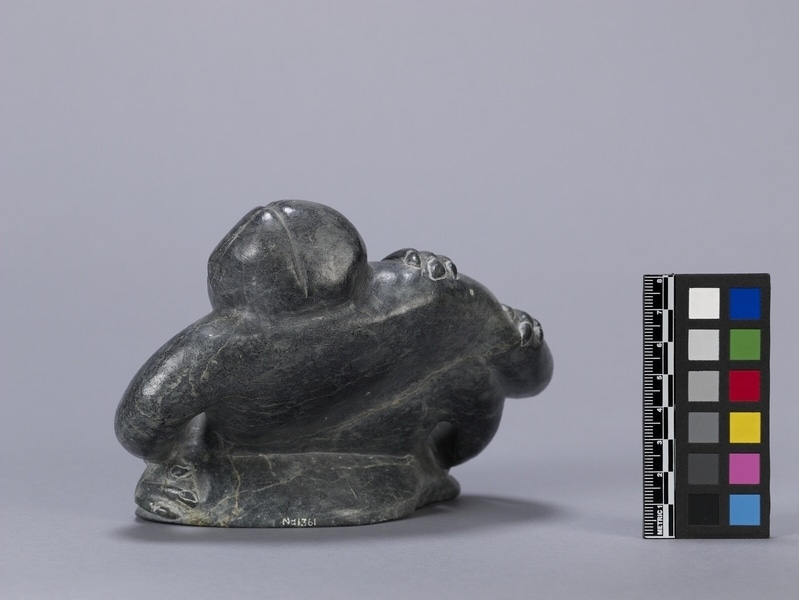
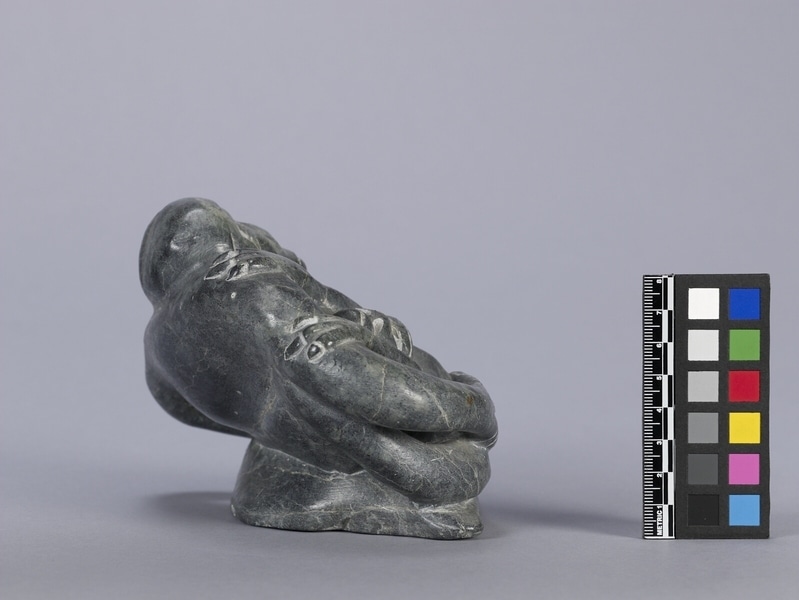
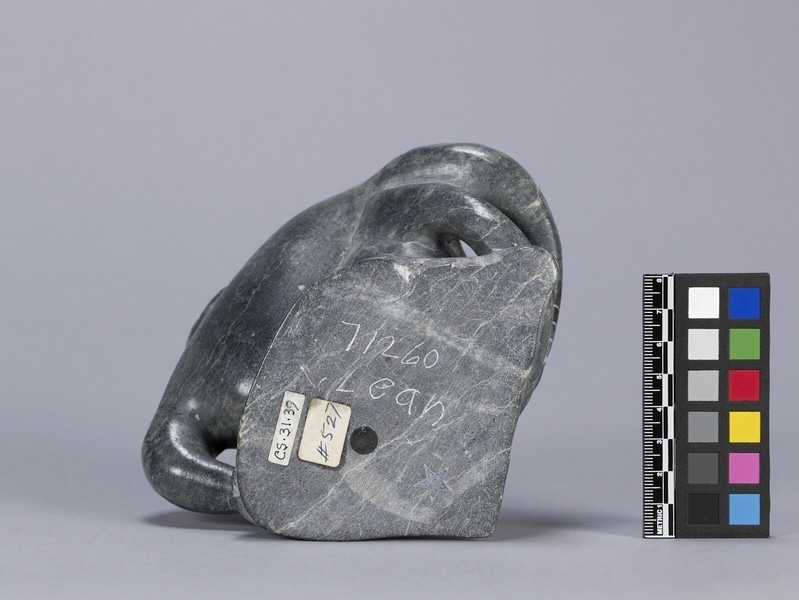
Description
Upper body of a stylized four-armed creature holding a smaller, two-armed one in its arms. Three of the creature's arms end in three claws with lighter grey horizontal stripes on each digit. It has three right arms and one left. The fourth arm is along the bottom and is the same as the others, except without the stripes. Face is broad with part and hairline indicated, oval in broad lighter oval eyes, very broad nose with lighter triangular nostrils and a lighter, slightly downturned mouth. The smaller creature has arms like the larger one except without stripes, and is holding onto the larger figure's arm. Its face is upside down and is similar to the larger one except no hair part is shown. The figure is leaning backwards. '71260 lean' is inscribed on the bottom. Sticker reads '#527'.
History Of Use
Contemporary Inuit sculpture produced for the art market began in the 1950's in response to a very successful sale, by the Canadian Handicraft Guild in Montreal in 1949, of pieces collected by James A. Houston on the east coast of Hudson Bay. The Inuit co-operatives developed by 1959 and a central marketing agency was established in 1965. Carving continues to be a major source of income in the Eastern Canadian Arctic, an area which has undergone major social and economic changes, especially since World War II. There has been a steady growth in permanent settlements during the last half of this century which has made large scale carving in stone feasible. Traditionally, carving materials were mainly bone, antler, and ivory, because of their light weight, strength, and durability. Heavier and more fragile stone was used primarily for lamps and cooking vessels. Although Inuit sculpture is often referred to as 'soapstone' sculpture, in fact, less than half of the stone used is soapstone (a high-grade talc or steatite). Other stones commonly used include serpentine, olivine, periodite, chrysolite, and others. In the early years of the industry it was possible to identify where a carving came from by the specific type of stone used, however, in recent years stone is traded on a wider, regional basis. Whale bone, antler, walrus tusk ivory, and a variety of other materials are also used by Inuit carvers. Themes in Inuit sculpture are based on personal experiences and beliefs, derive from oral traditions, mythology, as well as from narrative and figurative themes depicting arctic fauna and scenes of traditional Inuit life. Regional, community, and individual styles are also apparent.
Narrative
Balshine family collection.
Cultural Context
contemporary art
Item History
- Made by Leah Qumaluk (Maker) in Puvirnituq, Quebec, Canada during 1968
- Collected between 1969 and 1982
- Owned by Lorne Balshine before January 25, 1988
- Received from Lorne Balshine (Seller), Finning Ltd. (Funding source) and University Purchase (Funding source) on January 25, 1988
What
Who
- Culture
- Inuit
- Creator
- Leah Qumaluk (Maker)
- Previous Owner
- Lorne Balshine
- Received from
- Lorne Balshine (Seller), Finning Ltd. (Funding source) and University Purchase (Funding source)
Where
- Holding Institution
- MOA: University of British Columbia
- Made in
- Puvirnituq, Quebec, Canada
When
- Creation Date
- during 1968
- Collection Date
- between 1969 and 1982
- Ownership Date
- before January 25, 1988
- Acquisition Date
- on January 25, 1988
Other
- Item Classes
- carvings & sculpture
- Condition
- good
- Current Location
- Case 43
- Accession Number
- 1263/0191